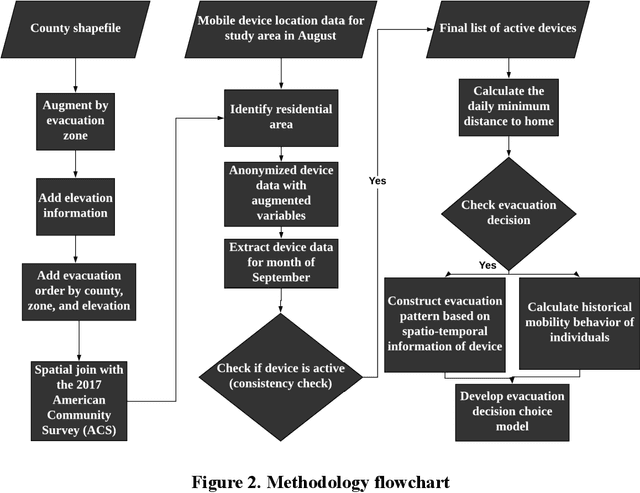Hannah Younes
Constructing Evacuation Evolution Patterns and Decisions Using Mobile Device Location Data: A Case Study of Hurricane Irma
Feb 24, 2021



Abstract:Understanding individuals' behavior during hurricane evacuation is of paramount importance for local, state, and government agencies hoping to be prepared for natural disasters. Complexities involved with human decision-making procedures and lack of data for such disasters are the main reasons that make hurricane evacuation studies challenging. In this paper, we utilized a large mobile phone Location-Based Services (LBS) data to construct the evacuation pattern during the landfall of Hurricane Irma. By employing our proposed framework on more than 11 billion mobile phone location sightings, we were able to capture the evacuation decision of 807,623 smartphone users who were living within the state of Florida. We studied users' evacuation decisions, departure and reentry date distribution, and destination choice. In addition to these decisions, we empirically examined the influence of evacuation order and low-lying residential areas on individuals' evacuation decisions. Our analysis revealed that 57.92% of people living in mandatory evacuation zones evacuated their residences while this ratio was 32.98% and 33.68% for people living in areas with no evacuation order and voluntary evacuation order, respectively. Moreover, our analysis revealed the importance of the individuals' mobility behavior in modeling the evacuation decision choice. Historical mobility behavior information such as number of trips taken by each individual and the spatial area covered by individuals' location trajectory estimated significant in our choice model and improve the overall accuracy of the model significantly.
 Add to Chrome
Add to Chrome Add to Firefox
Add to Firefox Add to Edge
Add to Edge